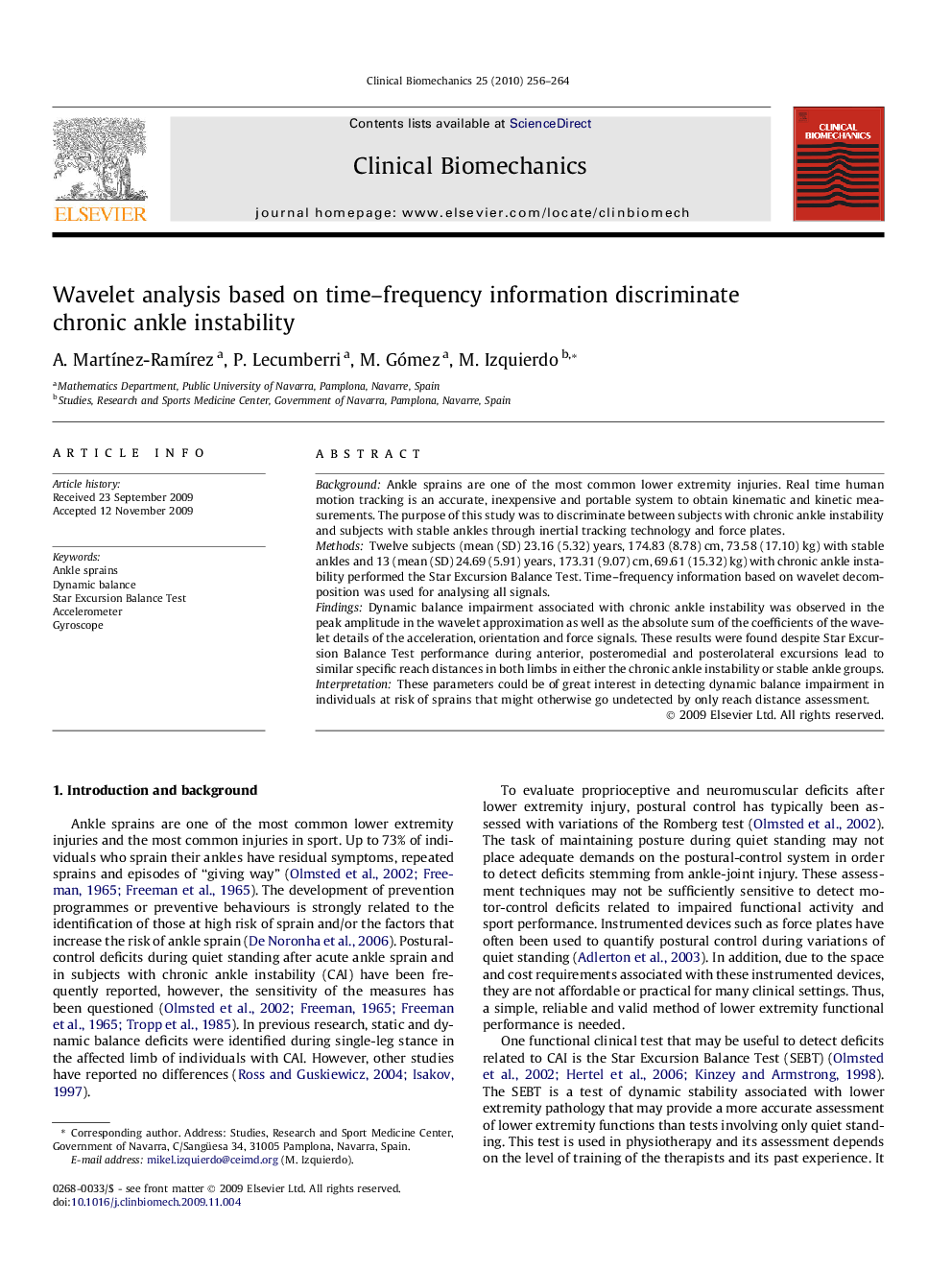| Article ID | Journal | Published Year | Pages | File Type |
|---|---|---|---|---|
| 4051118 | Clinical Biomechanics | 2010 | 9 Pages |
BackgroundAnkle sprains are one of the most common lower extremity injuries. Real time human motion tracking is an accurate, inexpensive and portable system to obtain kinematic and kinetic measurements. The purpose of this study was to discriminate between subjects with chronic ankle instability and subjects with stable ankles through inertial tracking technology and force plates.MethodsTwelve subjects (mean (SD) 23.16 (5.32) years, 174.83 (8.78) cm, 73.58 (17.10) kg) with stable ankles and 13 (mean (SD) 24.69 (5.91) years, 173.31 (9.07) cm, 69.61 (15.32) kg) with chronic ankle instability performed the Star Excursion Balance Test. Time–frequency information based on wavelet decomposition was used for analysing all signals.FindingsDynamic balance impairment associated with chronic ankle instability was observed in the peak amplitude in the wavelet approximation as well as the absolute sum of the coefficients of the wavelet details of the acceleration, orientation and force signals. These results were found despite Star Excursion Balance Test performance during anterior, posteromedial and posterolateral excursions lead to similar specific reach distances in both limbs in either the chronic ankle instability or stable ankle groups.InterpretationThese parameters could be of great interest in detecting dynamic balance impairment in individuals at risk of sprains that might otherwise go undetected by only reach distance assessment.
